Carnival and Arison
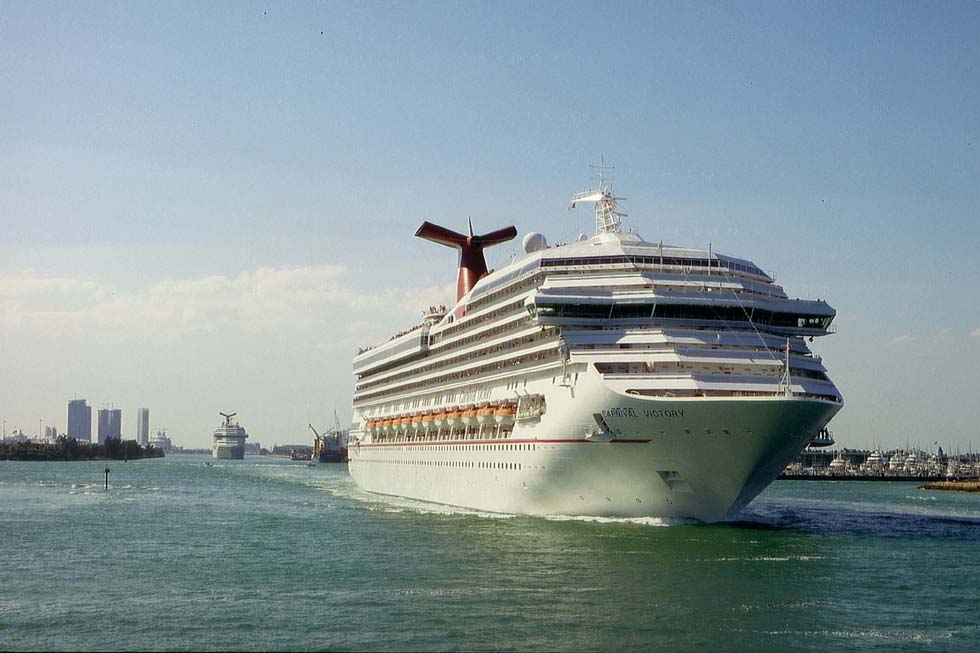
“Carnival Victory” and “Carnival Valor”, departing from Miami, 2007 (WS)
Download this picture with 1500 x 1000 pix, 300 dpi

The Carnival Corporation became world’s leader in cruise shipping. While famous passenger shipping companies failed, Ted Arison, migrated in 1954 from Israel, and Knut Kloster started modern-day cruising successfully. Frommer’s Cruises & Ports of Call summarized the story of the origins: “Ted Arison, a somewhat reclusive billionaire who passed away in 1999, had sold an airfreight business at New York in 1966 and intended to retire to his native Israel to enjoy the fruits of his labor – after a few little more ventures. After he negotiated terms for chartering a ship, he assembled a group of paying passengers, then discovered that the ship’s owner could no longer guarantee the vessel’s availability. According to latter-day legend, a deal was hastily struck whereby Arison’s passengers would be carried aboard a laid-up ship owned by Knut Kloster …”. This development started with car-ferries, marketed by the Arison Shipping Company – see the chapters Branch Lines and Ferries/ Levant/ Gulf & Caribbean. Details are given by historian Arnold Kludas: Arison had arranged to charter the car ferry “Nili” (6,700 gt) from Somerfin Car Ferries of Haifa for Caribbean cruises in summer 1966. Months before, in October 1965, the author was surprised to see the “Nili” at Piraeus, being a white ship with light-blue ribbons and the label “Helsinki Express” (of Finnlines). Finally in December 1966 Kloster’s new ferry “Sunward” (8,666 gt) started cruising from Miami for Arison’s passengers – see the chapter Kloster and Norwegian.
Carnival Corporation
In 1972 Arison and Kloster separated after bitter disputes. Ted Arison founded Carnival Cruise Lines Inc., starting with a single second-hand vessel. “Put a passenger ship in Miami and point it toward the Bahamas… no one succeeded better at the formula than Israeli entrepreneur Ted Arison, who, in 1972, relaunched a retired ocean liner to start what would become the world’s largest cruise company. On its maiden voyage, however, the “Mardi Gras”, which in a former life was the “Empress of Canada”, did something few other cruise ships since have done: She ran aground on a sandbar just outside the Port of Miami”, reported Ralph Grizzle, editor of Avid Cruiser magazine, in Hemispheres Magazine (March 2007).
Nevertheless, Ted Arison’s concept, targeting the middle market demographic, achieved a tremendous success. In 1987 the enterprise became a publicly traded company. That step enabled the Carnival Corporation to acquire in 1989 Holland America Line, with a 15,000-berth capacity the leader on the sickly premium-class market. With Holland America, tiny Windstar Cruises was acquired (given away in 2008). French magazine La Vie du Rail had commented: “During some months, a movement to buy up continues to trouble the world of the cruise companies. In some cases the activities failed, for example Carnival Cruise Line’s attempt to acquire Royal Caribbean Cruise Line, in some case they are leading to an efficient purchase”. A cooperation with Epirotiki of Greece under the label Epirotiki Continental and creation of Fiesta Marina in 1993 were short-term interludes.
In 1996 Carnival bought the exclusive Seabourn Cruise Line (see chapter Highlights). Carnival Air Lines was given away in 1997 and a 25% shareholding in Airtours was sold in 2001. Between 1997 and 2000 the acquisition of ailing Costa Crociere, Europe’s biggest operator, was put through. In 1998 the money-loosing prestigious Cunard Line was taken over and in 2003 the P&O Group, with Princess Cruises number three on the market, was acquired together with AIDA Cruises. With acquisition of Princess Cruises, the Carnival Corporation, “World’s Leading Cruise Lines”, achieved a market share of c.40%. In 2007 Ibero Cruzeros was added.
The Hamburg newspaper Welt am Sonntag reported in 2005 (20 February): “Micky Arison (…) who took over the enterprise in 1979 from his father, the pioneer and founder of the company, is managing the corporation like a family enterprise or a principality. 42 percent of the shares are owned by his family”.
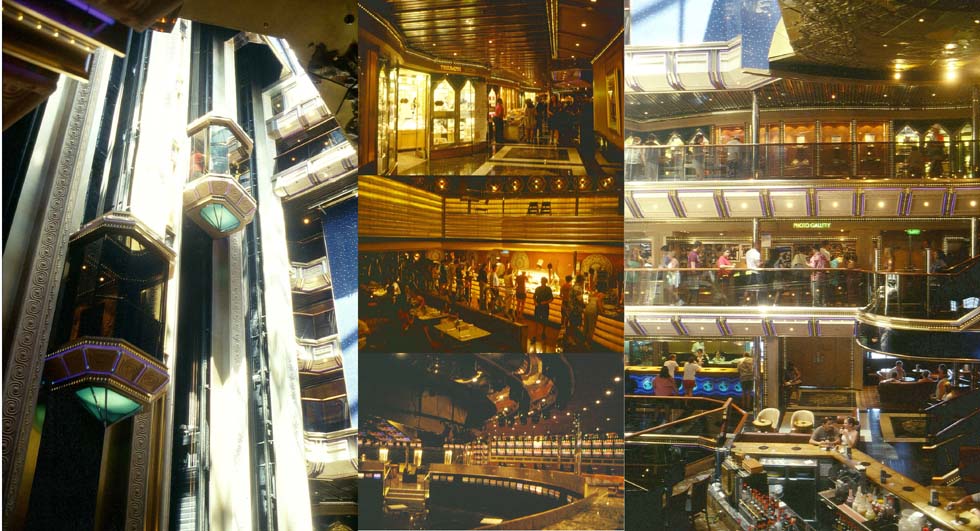
“Carnival Triumph”, 2007 (WS)
Carnival Cruise Lines
Arison’s first cruise ship, the “Mardi Gras” (1961/18,261 gt, ex “Empress of Canada” of Canadian Pacific) was joined in 1976 by the “Carnivale” (1956/18,952 gt, ex “Empress of Britain” of Canadian Pacific, “Queen Anna Maria” of Greek Line) and in 1978 by the “Festivale” (1962/26,632 gt, ex “Transvaal Castle” of the Union Castle Line, “S.A. Vaal” of Sofmarine). After new ships had been built, the second-hand vessels were sold. The ex-“Festivale” was arrested in 2002 as “The Big Red Boat III” of bankrupt Premier Cruise Line and scrapped in 2003. The ex-“Mardi Gras”, in the end the “Apollon”, went to the scrapyard in 2003, too. One of the first vessels remained alive for some years in the 21st century. It’s the “Carnivale” of 1956, which had become the “Fiesta Marina”, then “Olympia” of Epirotiki and finally “The Topaz” (32,327 gt) of the Peaceboat Organization until being scrapped in 2009.
In the 80s the new ships “Tropicale” (1981/ initially 22,919 gt), the larger “Holiday” (1985/ 46,042 gt) and her sisters “Jubilee” (1986/ 47,262 gt) and “Celebration” (1987/ 47,262 gt) were introduced. Outdated in the meantime, they were to be given away to subsidiary companies. Targeting the Asian market, Arison sold the “Tropicale” to Hyundai Merchant Marine for cruising from South Korea for Carnival Cruises Asia, but in 1997 the project was cancelled (see ‘Ferries’, Dec. 2013).
Trademark of the Carnival fleet is the racy Carnival funnel, a design idea of architect Joe Farcus, first realized with the “Tropicale”, reminding somewhat the funnels of the “France”. Naval architect, already for the Holiday class, is Stephen Payne. Catchword is ‘the Fun Ship’ and the interior design by Farcus is part of that fun. It became the trendsetter for Carnival’s megaships, each ship’s decoration dedicated to a special theme. Under the guidance of president Bob Dickinson, Carnival Cruise Lines had become the largest among world’s cruise companies, then rivaled by Royal Caribbean International.
After the Carnival Corporation went public in 1987, a new era in shipbuilding began. In the ‘90s eight megaships of the Fantasy class were introduced, the “Elation” of 1998 being the first cruise ship equipped with Azipod propulsion. The Destiny class from Fincantieri, different by its racy appearance, was the first to exceed the 100,000-tons barrier. The ships became the model for the “Costa Fortuna” of Costa Cruises. With the Destiny class, the five-deck atrium, leading onto a promenade stretching along one side of the ship, and the two-level dining rooms became standard, the cuisine being upgraded by Michelin three-star chef Georges Blanc’s inspirations. Highlights are the Vegas-style musicals in the three-deck theatre, another innovation. The equally nice Spirit class is based on the “Costa Atlantica” design from Kvaerner Masa Yards. The Conquest class, an extension of the Destiny class, inaugurated the development towards the even larger Dream class, all with the racy Fincantieri appearance, Farcus-styled interiors, the atrium up to 11 decks high, and reliable screw drive. With the “Carnival Destiny”, renamed “Carnival Sunshine” (102,863 gt), renovation of megaships under new class names started in 2012.
Around 2005, Carnival’s considerations of a 180,000-ton megaship were published. Then the press announced a 220,000-ton class of rivaling Royal Caribbean to enter service already in 2009. And ShipPax informed in 2006: “Carnival is mulling about their Pinnacle class exceeding 200,000 gt and 380 meters, which is expected to become even larger”. Then the race for size slowed down. The “Carnival Vista”, the first ship of the new 135,000 gt Vista class, was ordered for delivery in 2016, once again from Fincantieri.
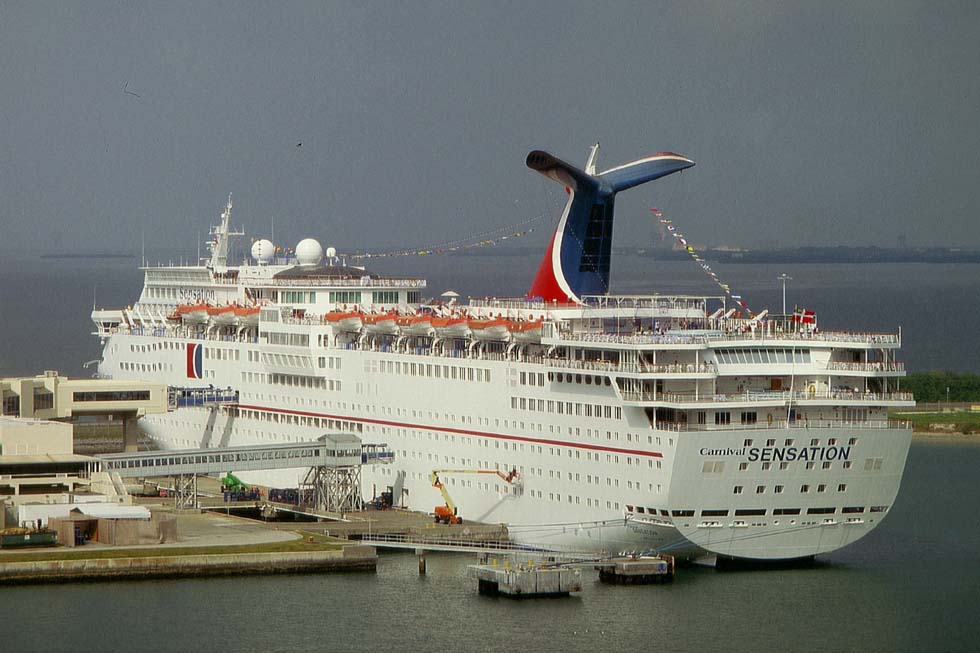
“Carnival Sensation”, Fantasy class, Port Canaveral 2008 (WS)
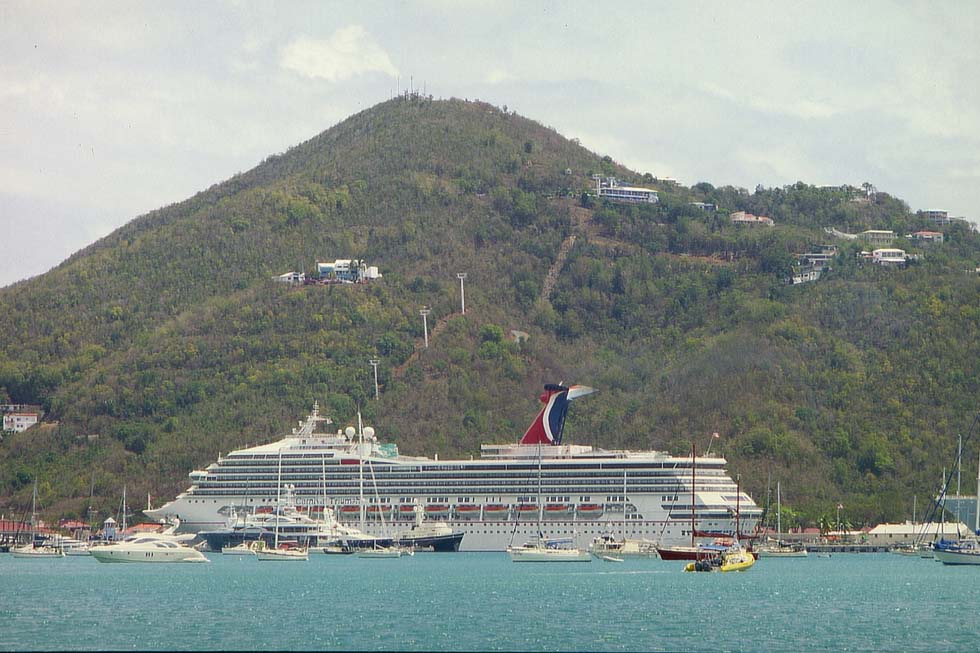
“Carnival Triumph”, Destiny class, St.Thomas 2007 (WS)
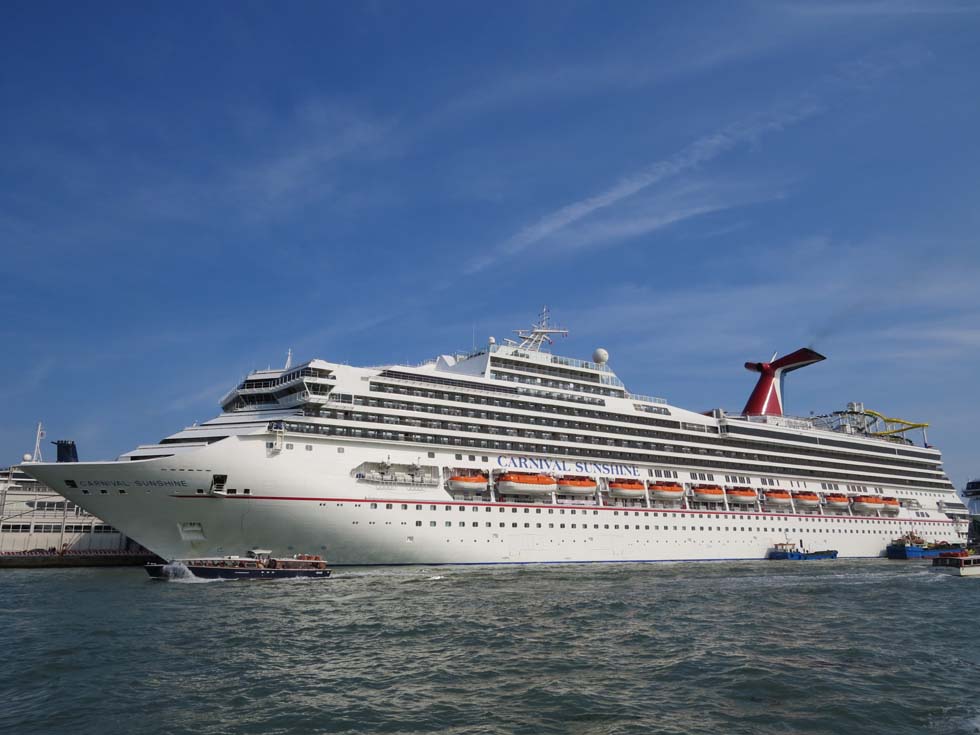
“Carnival Sunshine”, the refurbished “Carnival Destiny”, Venice 2013 (WS)
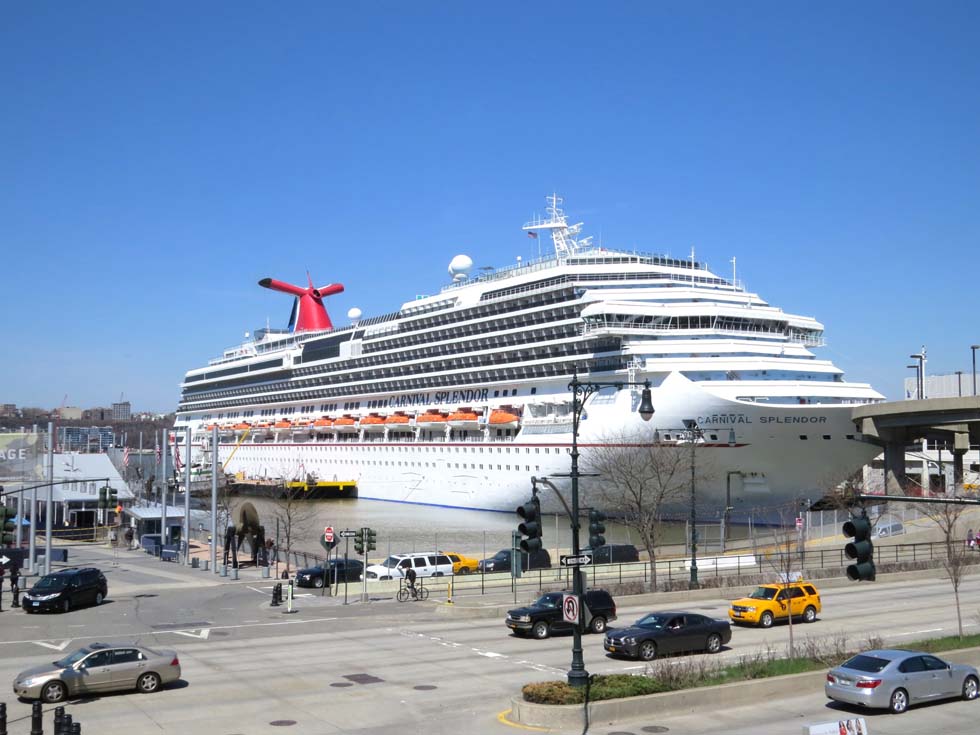
“Carnival Splendor”, Conquest class, New York Passenger Ship Terminal 2014 (WS)
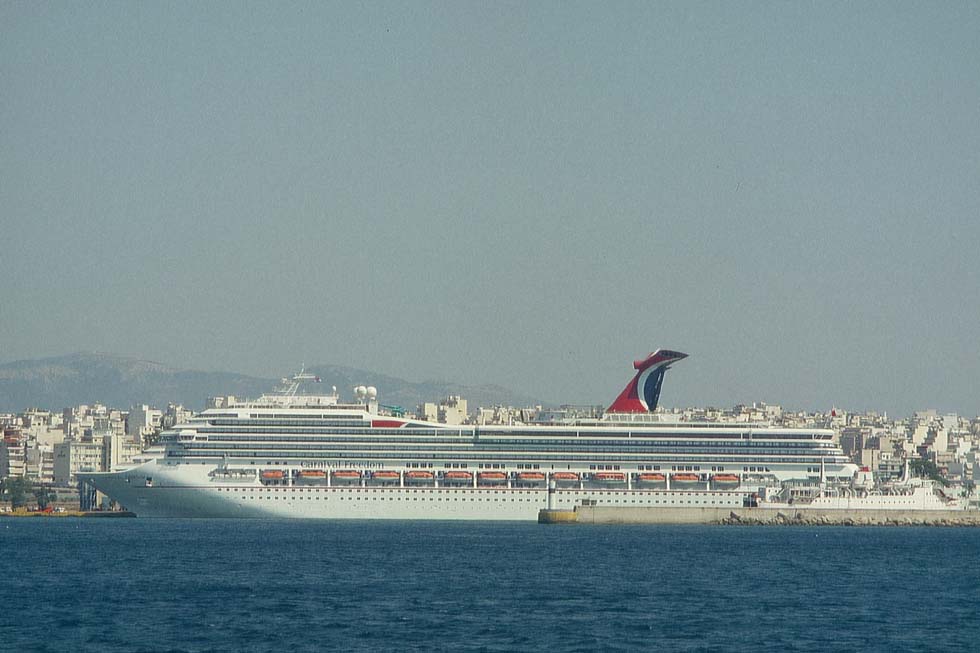
“Carnival Freedom”, Conquest class, Piraeus 2008 (WS)
Ships delivered from the 1990s:
Fantasy class
Kvaerner Masa Yards: “Fantasy” (1990), “Ecstasy” (1991), “Sensation” (1993), “Fascination” (1994), “Imagination” (1995), “Inspiration” (1996/70,367 gt each). “Elation” and “Paradise” (1998/70,390 gt each) were world’s first cruise ships with 2 Azipods. Refurbished, the ships got the prefix “Carnival” added to their name.
Destiny class
Fincantieri: “Carnival Destiny” (1996/101,353 gt); “Carnival Triumph (1999) and “Carnival Victory” (2000/101,509 gt each, with an additional deck atop).
Spirit class
Kvaerner Masa Yards, 2 Azipods: “Carnival Spirit” (2000/85,619 gt), “Carnival Pride” (2001/85,920gt), “Carnival Legend” (2002/85,942 gt), “Carnival Miracle” (2004/85,942 gt or generally 85,500gt).
Conquest class (based on Destiny class)
Fincantieri: “Carnival Conquest (2002/110,239 gt), “Carnival Glory” (2003/110,239 gt), “Carnival Valor” (2004/110,239 gt), “Carnival Liberty” (2005/110,320 gt), “Carnival Freedom” (2007/110,320 gt), “Carnival Splendor” (2008/113,323 gt, with a wider funnel and additional facilities, obviously planned for Costa).
Dream class
Fincantieri: “Carnival Dream” (2009/ 128,500 gt), “Carnival Magic” (2011/ 128,251 gt), “Carnival Breeze” (2012/128,500gt).
Vista class
Fincantieri: “Carnival Vista” (2016/ 135,000 gt) …
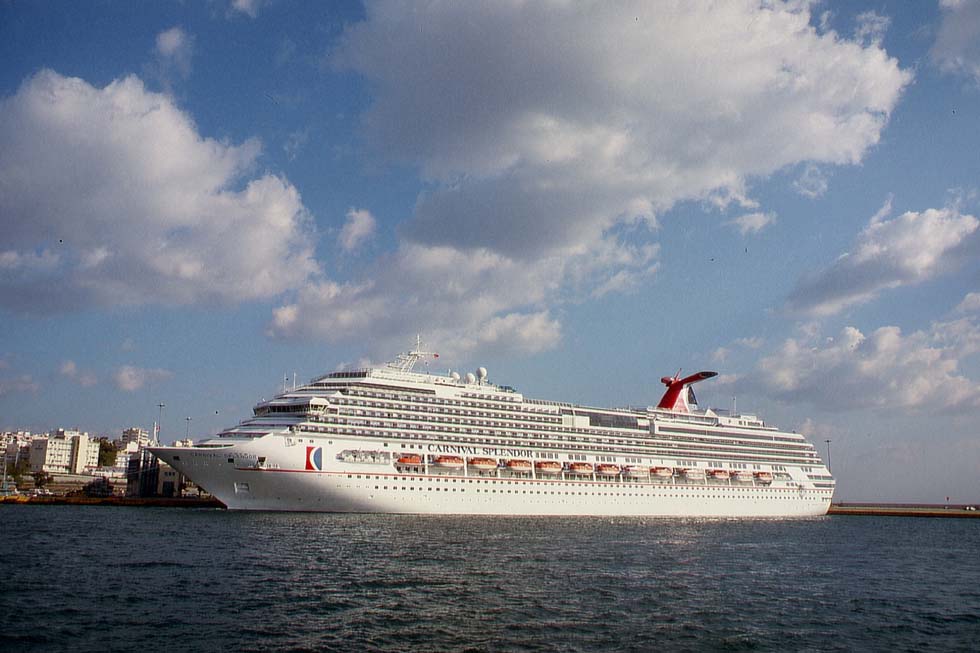
“Carnival Splendor”, Piraeus 2008 (WS)
|




